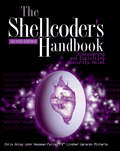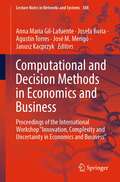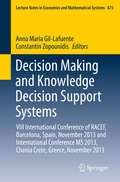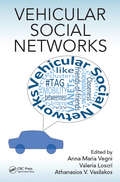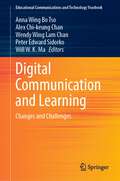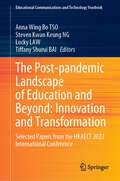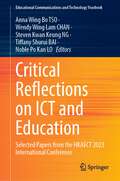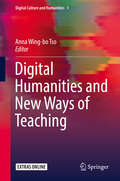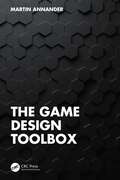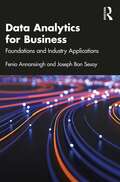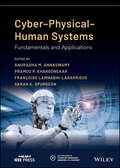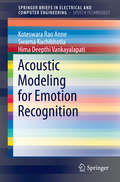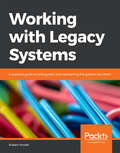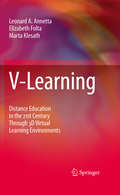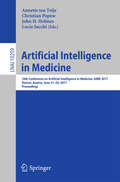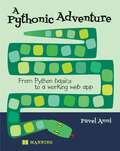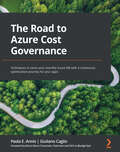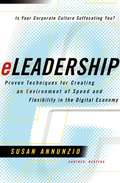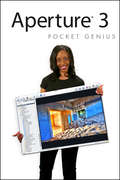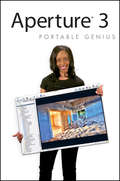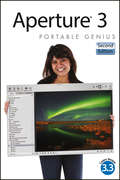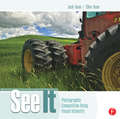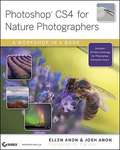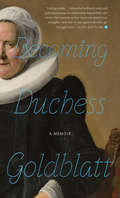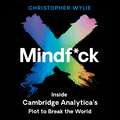- Table View
- List View
The Shellcoder's Handbook, Second Edition: Discovering and Exploiting Security Holes
by Chris Anley John Heasman Felix Fx" Lindner Gerardo RicharteThis much-anticipated revision, written by the ultimate group of top security experts in the world, features 40 percent new content on how to find security holes in any operating system or application New material addresses the many new exploitation techniques that have been discovered since the first edition, including attacking "unbreakable" software packages such as McAfee's Entercept, Mac OS X, XP, Office 2003, and Vista Also features the first-ever published information on exploiting Cisco's IOS, with content that has never before been explored The companion Web site features downloadable code files
Computational and Decision Methods in Economics and Business: Proceedings of the International Workshop “Innovation, Complexity and Uncertainty in Economics and Business” (Lecture Notes in Networks and Systems #388)
by Anna Maria Gil-Lafuente Janusz Kacprzyk José M. Merigó Josefa Boria Agustín TorresThis book presents different topics related to innovation, complexity, uncertainty, modeling and simulation, fuzzy logic, decision-making, aggregation operators, business and economic applications, among others. The chapters are the results of research presented at the International Workshop "Innovation, Complexity and Uncertainty in Economics and Business", held in Barcelona, in November 2019, by The Ibero-American Network for Competitiveness, Innovation and Development (REDCID in Spanish) and the Royal Academy of Economic and Financial Sciences (RACEF in Spanish). These papers are useful for junior and senior researchers in the area of economics and business.
Decision Making and Knowledge Decision Support Systems
by Anna Maria Gil-Lafuente Constantin ZopounidisThis book presents recent advancements of research, new methods and techniques, applications and projects in decision making and decision support systems. It explores expert systems and neural networks, knowledge engineering and management, fuzzy sets and systems and computational methods for optimization, data analysis and decision making. It presents applications in Economics, Finance, Management and Engineering. The book undertakes to stimulate scientific exchange, ideas and experiences in the field of decision making in Economy and Management. Researchers and practitioners alike will benefit from this book, when they are dealing with imprecision, vagueness and uncertainty in the context of decision making.
Vehicular Social Networks
by Anna Maria Vegni; Valeria Loscrí; Athanasios V. VasilakosThe book provides a comprehensive guide to vehicular social networks. The book focuses on a new class of mobile ad hoc networks that exploits social aspects applied to vehicular environments. Selected topics are related to social networking techniques, social-based routing techniques applied to vehicular networks, data dissemination in VSNs, architectures for VSNs, and novel trends and challenges in VSNs. It provides significant technical and practical insights in different aspects from a basic background on social networking, the inter-related technologies and applications to vehicular ad-hoc networks, the technical challenges, implementation and future trends.
Digital Communication and Learning: Changes and Challenges (Educational Communications and Technology Yearbook)
by Anna Wing Bo Tso Alex Chi-keung Chan Wendy Wing Lam Chan Peter Edward Sidorko Will W. K. MaThis edited book collects papers with perspectives from scholars and practitioners in Asia, Australia, and Europe to reveal the pros and cons, chances and challenges, constraints, and potential risks that educators and learners are facing as the new paradigm for communication and learning takes place, with a view to shedding light on the global education climate in the midst of the pandemic. Since the onset of the global pandemic, education has been revolutionized in almost every aspect. The emergency precautionary measures which were once supposed to be temporary school arrangements only have now become the new normal, reshaping our understanding of learning environments, redefining the pedagogic standards in terms of teaching practices, learning designs, teacher–student interaction, feedback, and assessment. Online teaching, distanced learning, flipped classrooms, and self-paced e-learning have all played an increasingly vital role in shaping a new education culture in various education settings, affecting school management, teachers, students, and parents alike. While ICT in education, alongside new media, has provided ample benefits and convenience for educators and students, communication and virtual lessons conducted in the socially distanced classroom appear to have brought issues such as the digital divide, e-mental health, insufficient technical support, inefficient classroom management, reduced interaction between teachers and students, not to mention the growing concerns over privacy and security.
The Post-pandemic Landscape of Education and Beyond: Selected Papers from the HKAECT 2022 International Conference (Educational Communications and Technology Yearbook)
by Anna Wing Bo TSO Steven Kwan Keung NG Locky Law Tiffany Shurui BaiWith the purpose of exploring the critical possibilities offered by the global crisis of coronavirus pandemic, this volume presents the collected works of scholars, educators and practitioners worldwide, bringing to the readers a broad array of perspectives on how COVID-19 inspires us to rethink, redefine, and make sense of the theoretical and pedagogical approaches that can be applied in various educational contexts. Part One of the book provides an insightful exploration of the technology-mediated innovations used in English language learning and teaching. Part Two reflects on the online learning experiences of students, as well as the teachers’ strategies to cope with changes as the COVID-19 pandemic unleashed unprecedented disruptions in class. Part Three looks into a range of case studies regarding the digital divide, cross-border schooling, cyberbullying, and cross-disciplinary skill training in the post-pandemic workplace, highlighting the importance of creating a positive learning environment. Part Four draws on the observations and experiences of frontline teachers, to examine ways to optimize the digital learning experiences of students in and outside the classroom. This volume will be a useful reference for scholars in Education, Communication, Applied Linguistics, Social Work, and Positive Psychology.
Critical Reflections on ICT and Education: Selected Papers from the HKAECT 2023 International Conference (Educational Communications and Technology Yearbook)
by Anna Wing Bo TSO Wendy Wing Lam CHAN Steven Kwan Keung NG Tiffany Shurui Bai Noble Po Kan LOThis book includes selected papers from the Hong Kong Association for Educational Communications and Technology (HKAECT) 2023 International Conference. It provides readers with a collection of insightful chapters which delves into the realms of data visualization, artificial intelligence (AI), virtual reality (VR), and augmented reality (AR). It also reflects on the dynamic shifts in online learning, blended learning, and self-directed learning. Part one of the volume includes case studies and examples of the integration of advanced technologies, such as data visualization, generative AI, and mixed reality in education. Part two shares experiences and observations from educators who embrace online learning, blended learning, and independent learning. Part three investigates the influences digital education has on learning, teaching, and society as a whole. The book paves a path for thought-provoking discussions on the future of education in a digitally connected world. It is a vital resource for educators, administrators, policymakers, and learners seeking to navigate and thrive in the rapidly evolving world of digital education.
Digital Humanities and New Ways of Teaching (Digital Culture and Humanities #1)
by Anna Wing-bo TsoThis volume includes a variety of first-hand case studies, critical analyses, action research and reflective practice in the digital humanities which ranges from digital literature, library science, online games, museum studies, information literacy to corpus linguistics in the 21st century. It informs readers of the latest developments in the digital humanities and their influence on learning and teaching.With the growing advancement of digital technology, humanistic inquiries have expanded and transformed in unfathomable complexity as new content is being rapidly created. The emergence of electronic archiving, digital scholarship, digitized pedagogy, textual digitization and software creation has brought about huge impacts on both humanities subjects and the university curricula in terms of nature, scope and design. This volume provides insights into what these technological changes mean for all the stakeholders involved and for the ways in which humanities subjects are understood. Part 1 of this volume begins with a broad perspective on digital humanities and discusses the current status of the field in Asia, Canada and Europe. Then, with a special focus on new literacies, educational implications, and innovative research in the digital humanities, Parts 2-4 explore how digital technology revolutionizes art forms, curricula, and pedagogy, revealing the current practices and latest trends in the digital humanities.Written by experts and researchers across Asia, Australia, Canada and Europe, this volume brings global insights into the digital humanities, particularly in the education aspect. It is of interest to researchers and students of cultural studies, literature, education, and technology studies.The strongest point of this collection of work is that, it brings important concepts to the study of digital literacies, for example, looking at it from the perspective of new literacies, languages and education.Daniel Churchill, Associate Professor, Faculty of Education, The University of Hong KongWith a rapidly growing advancement in digital tools, this book has made a relevant contribution by informing readers what the latest development of these tools are, and discusses how they can aid research, libraries, education and even poets across different continents. Samuel Kai-wah Chu, Associate Professor, Faculty of Education, The University of Hong Kong
The Game Design Toolbox
by Martin AnnanderThis book presents 71 practical game design tools that readers can use to solve real-world game design problems. Written to be a "toolbox" for game designers, it offers a hands-on approach with clear and easy-to-use tools so that readers can quickly find the right solution to the problem they are facing. This book is divided into six game design phases: ideation, exploration, commitment, problem solving, balancing, and tuning. Each category contains an array of relevant tools, and the accompanying indexes offer suggestions for tools to use for specific problems. Support Materials for this book offer further teaching materials, exercises, and complementary FAQs. Written to be a practical resource, this book will be a useful toolbox for junior and veteran game designers alike.
Data Analytics for Business: Foundations and Industry Applications
by Fenio Annansingh Joseph Bon SesayData analytics underpin our modern data-driven economy. This textbook explains the relevance of data analytics at the firm and industry levels, tracing the evolution and key components of the field, and showing how data analytics insights can be leveraged for business results. The first section of the text covers key topics such as data analytics tools, data mining, business intelligence, customer relationship management, and cybersecurity. The chapters then take an industry focus, exploring how data analytics can be used in particular settings to strengthen business decision-making. A range of sectors are examined, including financial services, accounting, marketing, sport, health care, retail, transport, and education. With industry case studies, clear definitions of terminology, and no background knowledge required, this text supports students in gaining a solid understanding of data analytics and its practical applications. PowerPoint slides, a test bank of questions, and an instructor’s manual are also provided as online supplements. This will be a valuable text for undergraduate level courses in data analytics, data mining, business intelligence, and related areas.
Cyber-Physical-Human Systems: Fundamentals and Applications (IEEE Press Series on Technology Management, Innovation, and Leadership)
by Anuradha M. Annaswamy Pramod P. Khargonekar Françoise Lamnabhi‐Lagarrigue Sarah K. SpurgeonCyber–Physical–Human Systems A comprehensive edited volume exploring the latest in the interactions between cyber–physical systems and humans In Cyber–Physical–Human Systems: Fundamentals and Applications, a team of distinguished researchers delivers a robust and up-to-date volume of contributions from leading researchers on Cyber–Physical–Human Systems, an emerging class of systems with increased interactions between cyber–physical, and human systems communicating with each other at various levels across space and time, so as to achieve desired performance related to human welfare, efficiency, and sustainability. The editors have focused on papers that address the power of emerging CPHS disciplines, all of which feature humans as an active component during cyber and physical interactions. Articles that span fundamental concepts and methods to various applications in engineering sectors of transportation, robotics, and healthcare and general socio-technical systems such as smart cities are featured. Together, these articles address challenges and opportunities that arise due to the emerging interactions between cyber–physical systems and humans, allowing readers to appreciate the intersection of cyber–physical system research and human behavior in large-scale systems. In the book, readers will also find: A thorough introduction to the fundamentals of cyber–physical–human systems In-depth discussions of cyber–physical–human systems with applications in transportation, robotics, and healthcare A comprehensive treatment of socio-technical systems, including social networks and smart cities Perfect for cyber–physical systems researchers, academics, and graduate students, Cyber–Physical–Human Systems: Fundamentals and Applications will also earn a place in the libraries of research and development professionals working in industry and government agencies.
Acoustic Modeling for Emotion Recognition (SpringerBriefs in Speech Technology)
by Koteswara Rao Anne Swarna Kuchibhotla Hima Deepthi VankayalapatiThis book presents state of art research in speech emotion recognition. Readers are first presented with basic research and applications - gradually more advance information is provided, giving readers comprehensive guidance for classify emotions through speech. Simulated databases are used and results extensively compared, with the features and the algorithms implemented using MATLAB. Various emotion recognition models like Linear Discriminant Analysis (LDA), Regularized Discriminant Analysis (RDA), Support Vector Machines (SVM) and K-Nearest neighbor (KNN) and are explored in detail using prosody and spectral features, and feature fusion techniques.
Working with Legacy Systems: A practical guide to looking after and maintaining the systems we inherit
by Robert AnnettUnderstand the crux of legacy systems — their architecture, analysis, and security constraintsKey FeaturesUnderstand what are legacy systems and learn various strategies to maintain themDeep dive into the basic and advanced architectures of legacy systemsDiscover how to analyze and secure the legacy systemsBook DescriptionThe latest edition to our range of products is Packt Select - the new range of books with a broad spectrum of information on unique topics. We have identified your requirements, searched for the best books available, and we now offer these to you. With these books, you'll enjoy a smooth learning experience with the usual Packt "must-haves" of real-world examples and best practices.New technologies are continuously being introduced in the I.T. industry. While learning those is important, maintaining legacy systems is equally necessary to ensure that the I.T infrastructure of your organization functions to its best abilities. Sound knowledge of techniques that can be used for maintaining legacy systems, can help you avoid many pitfalls.You’ll begin the book with a quick understanding of what a legacy system looks like, how it works, and what are some common issues in it. Then, you’ll explore the architecture of a legacy system in detail and learn each of its components. You'll learn and use various techniques to analyze a legacy system. After learning about the security constraints associated with legacy systems, you'll explore ways to overcome these constraints and secure the systems. Towards the end of the book, you'll learn how easily make changes in the legacy systems to enhance their performance.By the end of this book, you'll have skills and confidence to work with legacy systems and efficiently maintain them.What you will learnPerform the static and dynamic analyses of legacy systemsImplement various best-practices to secure your legacy systemsUse techniques, such as data cleansing and process cleansing to stabilize your systemApply structural changes in your legacy system to make it highly availableIdentify and resolve common issues with legacy systemsGain knowledge of various tests that can help secure and maintain your legacy systemsWho this book is forThis book is ideal for IT professionals, who want to understand the working and maintenance of the legacy systems. Prior knowledge of working with legacy systems is not needed to complete this book.
V-Learning
by Leonard A. Annetta Elizabeth Folta Marta KlesathEqually grounded in the research and the practical applications developed by the authors over a number of years, this book shows how virtual learning environments could represent the future of higher education. As academics begin to use environments such as Second Life to reach a broader student audience, this volume offers the distance-learning community (administrators, faculty, and students) a different, yet successful, approach to delivering content over the Internet through 3D virtual learning environments that have the potential to transform higher education. Covering a broad spectrum of frameworks, from commercial multiplayer video games to online learning, the book shows just how powerful these environments can be in the arena of education, and concludes that data-driven practice will ensure almost universal take-up, even among those currently unwilling to use V-learning. The authors provide numerous practical examples of distance learning in its current state of development, as well as making informed predictions about how future environments might evolve. This much-needed book is right at the cutting edge of its subject, and comes at a time when research in both educational gaming and distance learning are converging.
Artificial Intelligence in Medicine: 16th Conference on Artificial Intelligence in Medicine, AIME 2017, Vienna, Austria, June 21-24, 2017, Proceedings (Lecture Notes in Computer Science #10259)
by Annette ten Teije, Christian Popow, John H. Holmes and Lucia SacchiThis book constitutes the refereed proceedings of the 16th Conference on Artificial Intelligence in Medicine, AIME 2017, held in Vienna, Austria, in June 2017.The 21 revised full and 23 short papers presented were carefully reviewed and selected from 113 submissions. The papers are organized in the following topical sections: ontologies and knowledge representation; Bayesian methods; temporal methods; natural language processing; health care processes; and machine learning, and a section with demo papers.
A Pythonic Adventure: From Python basics to a working web app
by Pavel AnniTime to take an adventure with friends! Team up with Erik and Simon to learn Python the easy way. This colorful book uses engaging questions and lively conversations to introduce computer programming to young readers one step at a time.In A Pythonic Adventure, you will learn useful Python skills like: Installing Python Working with files Creating text-based dialogs and menus Using if/then, loops, lists, dictionaries, and input/output Building web applications Making your web apps look super professional It&’s fun to learn with friends! In A Pythonic Adventure you&’ll meet Erik and Simon, two brothers who are just beginning their Python journey. Join them as they chat about the language, learn the basics, and build some cool programs. The book&’s dialogue helps young programmers understand complex concepts much more easily. It's the perfect way for young programmers (and their parents) to get started. There&’s no boring lessons or dull exercises in this adventure. You&’ll follow Erik and Simon&’s questions and mistakes, discover how to write programs with a team, and get a chance to create applications you can use in your daily life. By the time they&’re done reading, young learners will not only know how to write code, they&’ll know how to think about problems like professional developers. All code in this book runs on Mac, Windows, Linux, and Raspberry Pi. About the technology Computer programming is an adventure, full of new experiences, challenges, triumphs, and mistakes. In A Pythonic Adventure, you&’ll join brothers Erik and Simon as they learn to create their first Python program. Written especially for young readers, this book is the perfect introduction to a skill that will last a lifetime! About the book A Pythonic Adventure teaches you to code by asking questions, making errors, and trying out different solutions—just like in real life. As you go, you&’ll create a web application for a coffee shop step-by-step, from your first online menu to saving orders in a database. And this unique tutorial goes deeper than other beginner books. You&’ll learn and practice important skills like planning applications, finding bugs, and managing user expectations. What's inside Installing Python Creating text-based dialogs and menus Building web applications Making your web apps look professional About the reader For readers aged 10+. Perfect for adult beginners, too! About the author Pavel Anni is a Principal Customer Engineer at SambaNova Systems, and has also worked for Sun Microsystems, Oracle, and Red Hat. Table of Contents 1 Coffee for friends: First steps 2 Lists: What&’s on the menu? 3 Functions: Don&’t repeat yourself! 4 User errors: Everybody makes mistakes 5 Working with files: Being a shop manager 6 Main menu: Next customer! 7 Creating functions: Get the order and print it 8 Working with JSON: Save the order 9 Complete the menu: A real program 10 Learning Flask: Your first web application 11 Web form for orders: Coffee shop on the web 12 Database: We need good storage 13 Styles: Making it pretty 14 Help from AI: Improving our code 15 Next steps: Plans for the future
The Road to Azure Cost Governance: Techniques to tame your monthly Azure bill with a continuous optimization journey for your apps
by Paola E. Annis Giuliano Caglio Marco Barra CaraccioloGet to grips with Microsoft Azure cost management and gain complete, reliable, and sustainable control of your cloud spendKey FeaturesExplore resource rightsizing and cleanup methods and their implementationLearn key resource usage optimization conceptsUnderstand app optimization and plan for optimized and sustainable cloud native applicationsBook DescriptionCloud teams and ICT cost controllers working with Azure will be able to put their knowledge to work with this practical guide, introducing a process model for structured cost governance. The Road to Azure Cost Governance is a must-read if you find yourself facing the harsh reality of monthly cloud costs gradually getting out of control. Starting with how resources are created and managed, everything you need to know in order to track, display, optimize, rightsize, and clean up cloud resources will be tackled with a workflow approach that will leave the choice of operation to you (be it the Azure CLI, automation, logic apps, or even custom code). Using real-world datasets, you'll learn everything from basic cost management to modeling your cloud spend across your technical resources in a sustainable way. The book will also show you how to create a recursive optimization process that will give you full control of spending and savings, while helping you reserve budget for future cloud projects and innovation. By the end of this Azure book, you'll have a clear understanding and control of your cloud spend along with knowledge of a number of cost-saving techniques used by companies around the world, application optimization patterns, and the carbon impact of your cloud infrastructure.What you will learnUse Azure reporting, monitoring, and configurations to model your cloud resources and make costs clearerDiscover resource-saving techniques and put them into practiceEstablish a continuous clean-up and rightsizing processExplore and implement automation to drive recurrent savingsFind out how to use Azure Reservations in the best possible wayGet started with building cloud native, cost-optimized applicationsGet to grips with implementing cost- and carbon-aware applications on AzureWho this book is forIf you're someone who deals with Azure cloud costs and has a technical background, this book will help you understand and control your cloud spending. This book is for decision-makers, cloud managers, cloud architects, cost controllers, and software solution professionals working with Microsoft cloud services in Azure and looking to build optimized solutions for their enterprise operations.
eLeadership: Proven Techniques for Creating an Environment of Speed and Flexibility in the Digital Economy
by Susan AnnunzioProven Techniques for Creating an Environment of Speed and Flexibility in the Digital Economy
Aperture 3 Pocket Genius (Portable Genius #79)
by Josh Anon Ellen AnonIf you want to get the very most out of Aperture 3, put this savvy Portable Genius guide to work. Want to organize your images with Faces? Use GPS data to explore photos by the location? Import video? Create advanced, multimedia slide shows? You’ll find cool and useful Genius tips, full-color screenshots, and pages of easy-to-access shortcuts and tools that will save you loads of time and let you enjoy Aperture 3 to the max.
Aperture 3 Portable Genius
by Josh Anon Ellen AnonCompact, fluff-free, full-color guide to getting the most out of Apple's Aperture digital photography softwareThis handy Portable Genius guide is designed to help you avoid hassle, save time, and quickly learn what you need to know to use Apple's Aperture digital photography software effectively--and have fun while you're doing it! In a trim size that fits in your laptop bag, this practical guide gives you tips, tricks, and savvy advice on everything from navigating Aperture's user interface to advanced RAW image processing, publishing albums on the Web, and how to create your own photo book.Provides tips and techniques for the new or most useful features of Apple's Aperture 3 digital photography and digital manipulation programIncludes savvy advice and plenty of no-nonsense content in a hip way that is easy to accessCovers key tools and topics, including keyboard shortcuts, how to streamline workflows, advanced RAW image processing, and moreFeatures Genius icons throughout the book--smart or innovative ways to handle tasks and save yourself timeLearn Aperture in a fun way and get even more out of your Apple digital lifestyle with Aperture 3 Portable Genius.
Aperture 3 Portable Genius, 2nd Edition
by Josh Anon Ellen AnonGet the latest tips, facts, and secrets that help you make the most of Aperture 3 Aperture offers a full range of tools to help serious photographers organize and manipulate images and manage workflow. This little guide is packed with hip tips, secrets, and shortcuts that help you get even more functionality from the software. Find out more than you ever knew about vignetting, RAW fine-tuning, Quick Preview mode, Command Editor, and using the integrated iPhoto Browser. Learn new ways to streamline your workflow, get tips on publishing albums online or as customized photo books, and take advantage of many more Genius techniques. Designed for the Apple enthusiast, this handy, colorful guide is packed with ingenious and innovative tips for getting the most from Aperture 3, and the latest version 3. 3 Offers advice on using the new streamlined interface, using advanced RAW image processing, and streamlining workflow with keyboard shortcuts Shows how to maximize the effectiveness of vignetting, using Quick Preview mode and Command Editor, and working with the integrated iPhoto Browser Provides helpful hints on creating web-based albums and print photo books Aperture 3 Portable Genius, 2nd Edition gives you the professional tips and tricks that help you squeeze all the functionality from this cool software.
See It: Photographic Composition Using Visual Intensity
by Josh Anon Ellen AnonA good image is more than just acceptable exposure and sharp focus -- two components that photography instruction concentrates on. A fascinating subject doesn't necessarily result in a good image, and likewise, it's possible to create an outstanding image of a mundane subject. So how do you know the difference? Perhaps you've read a lot of material on how to use your camera, how to manage images, and/or how to make adjustments using different software programs. What usually is not covered is what needs to be done beyond obvious exposure, noise, and sharpening issues so that you can intuitively recognize the difference between a good and bad image, and most importantly, why. That's where this book comes in. Rather than wasting time blindly trying one approach or another until something seems right, the quality of your imagery and the speed of your workflow will both vastly improve once you are able to articulate why you prefer one image to another. Expert authors Josh and Ellen Anon have spent years perfecting their visual-intensity based approach to composition, and in this gorgeous, full color guide, they'll share their techniques with you so that your overall photographic experience, both in terms of time investment and quality of output, will become a much more satisfying one.
Photoshop CS4 for Nature Photographers
by Josh Anon Tim Grey Ellen AnonUsing field-tested methods and practical instruction in both Photoshop and Photoshop Elements, this book reveals eye-opening techniques, terrific workflow ideas, and timesaving ways to apply a broad array of Photoshop tools to optimize digital images of nature. You'll encounter spectacular photographs from exotic places around the world shot by the authors, as well as tips and examples from some of the most esteemed professional nature photographers. In addition, the CD-ROM includes more than 60 minutes of video training as well as sample images to help you practice the techniques featured in the book.Note: CD-ROM/DVD and other supplementary materials are not included as part of eBook file.
Becoming Duchess Goldblatt
by AnonymousOne of the New York Times' 20 Books to Read in 2020 "Unforgettable...Behind her brilliantly witty and uplifting message is a remarkable vulnerability and candor that reminds us that we are not alone in our struggles—and that we can, against all odds, get through them." —Lori Gottlieb, New York Times-bestselling author of Maybe You Should Talk to SomeonePart memoir and part joyful romp through the fields of imagination, the story behind a beloved pseudonymous Twitter account reveals how a writer deep in grief rebuilt a life worth living.Becoming Duchess Goldblatt is two stories: that of the reclusive real-life writer who created a fictional character out of loneliness and thin air, and that of the magical Duchess Goldblatt herself, a bright light in the darkness of social media. Fans around the world are drawn to Her Grace&’s voice, her wit, her life-affirming love for all humanity, and the fun and friendship of the community that&’s sprung up around her. @DuchessGoldblat (81 year-old literary icon, author of An Axe to Grind) brought people together in her name: in bookstores, museums, concerts, and coffee shops, and along the way, brought real friends home—foremost among them, Lyle Lovett. &“The only way to be reliably sure that the hero gets the girl at the end of the story is to be both the hero and the girl yourself.&” — Duchess Goldblatt
Mindf*ck: Inside Cambridge Analytica's Plot to Break the World
by AnonymousWhat if you could peer into the minds of an entire population? What if you could target the weakest with rumours that only they saw?In 2016, an obscure British military contractor turned the world upside down. Funded by a billionaire on a crusade to start his own far-right insurgency, Cambridge Analytica combined psychological research with private Facebook data to make an invisible weapon with the power to change what voters perceived as real.The firm was created to launch the then unknown Steve Bannon's ideological assault on America. But as it honed its dark arts in elections from Trinidad to Nigeria, 24-year-old research director Christopher Wylie began to see what he and his colleagues were unleashing.He had heard the disturbing visions of the investors. He saw what CEO Alexander Nix did behind closed doors. When Britain shocked the world by voting to leave the EU, Wylie realised it was time to expose his old associates. The political crime of the century had just taken place - the weapon had been tested - and nobody knew.
